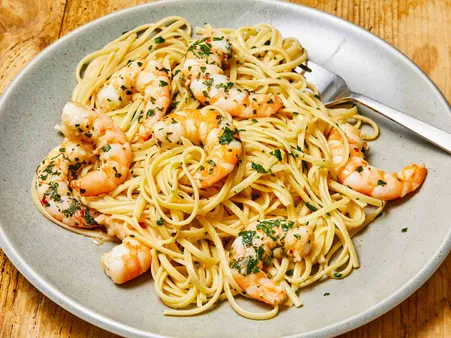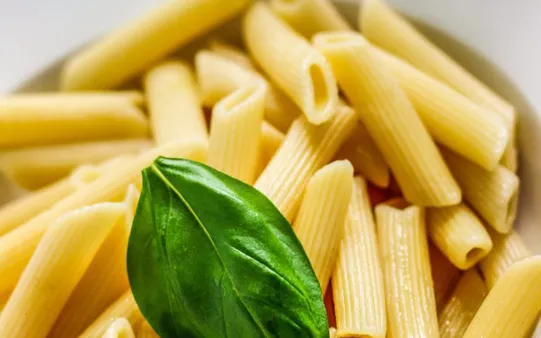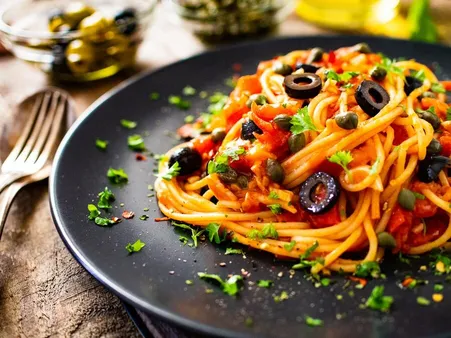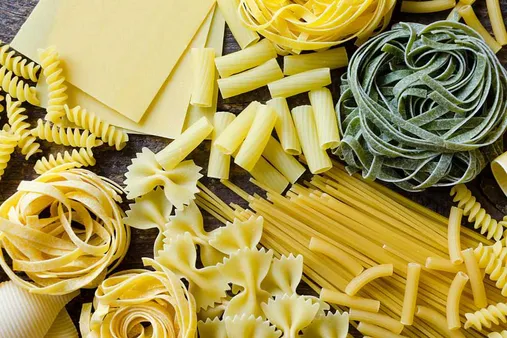Table of Contents
Embark on a culinary journey with Tauhuichiban to explore "The most popular Italian dishes and their origins." From the timeless flavors of pizza to the delectable indulgence of tiramisu, discover the stories behind these beloved dishes that have captivated taste buds for centuries.

The most popular Italian dishes and their origins: Discover the history of culinary classics
I. The Most Popular Italian Dishes
A Culinary Journey through Italy
From the bustling streets of Rome to the picturesque canals of Venice, Italy offers a tantalizing array of dishes that have captured the hearts and palates of food lovers everywhere. In this section, we embark on a culinary journey to explore the origins and stories behind some of the most popular Italian dishes, uncovering the cultural heritage and traditions that have shaped their enduring appeal.
Dish | Origins | Description |
|---|---|---|
Pizza | Naples, Italy | A flatbread typically topped with tomato sauce, cheese, and various toppings |
Pasta | Various regions of Italy | A wide variety of pasta shapes and sauces, such as spaghetti, lasagna, and ravioli |
Risotto | Northern Italy | A creamy rice dish typically made with broth, vegetables, and other ingredients |
Gelato | Florence, Italy | A frozen dessert made with milk, sugar, and flavorings |
Tiramisu | Veneto region, Italy | A coffee-flavored dessert made with ladyfingers, mascarpone cheese, and cocoa powder |
Pizza: A Neapolitan Delight
Pizza, perhaps the most iconic Italian dish, originated in the bustling city of Naples in the 18th century. Initially a simple dish enjoyed by the poor, pizza evolved over time to become a beloved culinary symbol of Italy. The traditional Neapolitan pizza is characterized by its thin, crispy crust, tangy tomato sauce, and fresh mozzarella cheese. Today, countless variations of pizza exist, showcasing the creativity and regional diversity of Italian cuisine.
Pasta: A Versatile Staple
Pasta, another cornerstone of Italian cooking, has a long and rich history dating back to ancient times. Made from a simple dough of flour and water, pasta comes in countless shapes and sizes, each with its own unique texture and purpose. From the long, thin strands of spaghetti to the filled ravioli and stuffed shells, pasta provides a versatile canvas for a wide array of sauces and ingredients.
Risotto: A Creamy Indulgence
Risotto, a luscious and flavorful rice dish, originated in the rice-growing regions of northern Italy. Arborio rice, known for its ability to absorb liquids and release starch, is the key ingredient in risotto. The rice is slowly cooked in a broth, often made with white wine, and gradually absorbs the liquid, resulting in a creamy and rich texture. Risotto can be made with a variety of ingredients, including vegetables, seafood, and meat.
Gelato: A Frozen Delight
Gelato, a beloved Italian frozen dessert, originated in the vibrant city of Florence during the Renaissance period. Unlike ice cream, gelato is made with a higher proportion of milk to cream, resulting in a denser and smoother texture. Gelato is also typically served at a slightly warmer temperature than ice cream, allowing for a more intense flavor experience. A wide variety of gelato flavors exist, ranging from classic favorites like chocolate and vanilla to unique creations inspired by local ingredients and traditions.
Tiramisu: A Coffee-Infused Dessert
Tiramisu, a delectable coffee-flavored dessert, originated in the Veneto region of Italy in the late 1960s. The name "tiramisu" means "pick me up" in Italian, and the dessert certainly lives up to its name with its combination of rich flavors and textures. Tiramisu is made with ladyfingers dipped in espresso, layered with a creamy mascarpone cheese filling, and dusted with cocoa powder. It is a popular dessert enjoyed at the end of a meal or as a special treat.

The Most Popular Italian Dishes
II. The Origins of Italian Cuisine
The origins of Italian cuisine are as diverse as the country itself. From the rolling hills of Tuscany to the sun-drenched shores of Sicily, each region of Italy has its own unique culinary traditions. But what unites all of these regional cuisines is a shared love of fresh, seasonal ingredients and a passion for cooking.
The earliest evidence of cooking in Italy dates back to the Neolithic period, when people began to cultivate crops and raise animals. The ancient Romans were known for their love of food and drink, and they developed many of the dishes that are still popular today, such as pizza and pasta.
During the Middle Ages, Italian cuisine was influenced by the Arabs, who introduced new ingredients such as rice, sugar, and spices. The Renaissance was a time of great cultural and artistic achievement in Italy, and this was reflected in the country's cuisine. New dishes were created, and old dishes were refined.
In the 19th century, Italy was unified, and this led to a greater exchange of ideas and recipes between the different regions of the country. This resulted in the development of a more standardized Italian cuisine.
Today, Italian cuisine is one of the most popular in the world. It is known for its delicious flavors, its use of fresh ingredients, and its emphasis on simplicity.
Region | Signature Dishes |
|---|---|
Tuscany | Bistecca alla Fiorentina, Ribollita, Panzanella |
Lombardy | Risotto alla Milanese, Osso Buco, Cotoletta alla Milanese |
Veneto | Baccalà alla Vicentina, Risotto al Nero di Seppia, Tiramisu |
Emilia-Romagna | Tortellini, Lasagna, Parmigiano-Reggiano |
Lazio | Spaghetti alla Carbonara, Amatriciana, Cacio e Pepe |
Campania | Pizza, Spaghetti alle Vongole, Baba |
Puglia | Orecchiette con Cime di Rapa, Focaccia, Burrata |
Sicily | Pasta alla Norma, Arancini, Cannoli |
Here are some of the most popular Italian dishes and their origins:
- Pizza: Pizza is one of the most popular Italian dishes in the world. It is believed to have originated in Naples in the 18th century. Pizza is typically made with a yeast-based dough that is topped with tomatoes, cheese, and various other toppings.
- Pasta: Pasta is another popular Italian dish. It is made with a dough that is made from flour and water. Pasta can be served with a variety of sauces, such as tomato sauce, pesto, or Alfredo sauce.
- Risotto: Risotto is a type of rice dish that is cooked in a broth. It is typically made with Arborio rice, which is a short-grain rice that has a high starch content. Risotto is often served with seafood, vegetables, or cheese.
- Gelato: Gelato is a type of Italian ice cream. It is made with milk, sugar, and flavorings. Gelato is typically served cold and is often topped with fruit, nuts, or chocolate.
- Tiramisu: Tiramisu is a type of Italian dessert. It is made with ladyfingers that are soaked in espresso and then layered with a mascarpone cheese filling. Tiramisu is typically served cold and is often dusted with cocoa powder.
These are just a few of the many delicious dishes that Italian cuisine has to offer. If you are looking for a delicious and authentic Italian meal, be sure to check out one of the many Italian restaurants in your area.

The Origins of Italian Cuisine
III. Regional Variations in Italian Cooking
When most people think of Italian food, they think of the hearty and flavorful dishes that have become popular all over the world: pasta dishes like Bolognese and Carbonara, pizzas of all varieties, and delicious desserts such as tiramisu and panna cotta. Yet, the food you eat in Italy will vary greatly depending on what region of the country you're in. This diversity is due to a number of factors, including climate, geography, and local history. For example, the cuisine of the northern region of Lombardy is known for its use of butter and saffron, while the cuisine of the southern region of Calabria is known for its use of chili peppers.
Here is a brief overview of some of the regional variations in Italian cooking:
- Northern Italy: The cuisine of Northern Italy encompasses beloved dishes like hearty risottos, polenta, the famous Osso Buco, and a range of delectable cheeses like Parmigiano Reggiano and Gorgonzola.
- Central Italy: Central Italian cooking includes an abundance of sauces, from the tomato-based Amatriciana and Arrabbiata to the creamier Alfredo and Carbonara sauces. Some of Italy's best-known pasta dishes originate from this region.
- Southern Italy: The cuisine of Southern Italy tends to be more rustic and flavorful. Pastas often include seafood and vegetables, and traditional dishes such as eggplant parmigiana, sausages, and sun-dried tomato-based sauces are common.
- Sicilian Cuisine: Famous for its Arab influences, Sicilian cuisine boasts unique dishes such as pasta alla Norma, with an eggplant and ricotta filling, as well as the sweet treat of cannoli.
- Sardinian Cuisine: On the beautiful island of Sardinia, you will encounter traditional dishes like roasted suckling pig, and pasta with red mullet and saffron.
No matter what region of Italy you visit, you're sure to find delicious food that reflects the unique culture and history of that region.Craving Italian tonight? Let's explore some highly-rated Italian restaurants near you!

Regional Variations in Italian Cooking
IV. The Evolution of Italian Food
The evolution of Italian cuisine is a long and fascinating journey that spans centuries, regions, and cultures. From its humble origins as peasant fare to its current status as a global culinary force, Italian food has undergone countless transformations, influenced by a diverse range of factors such as geography, history, trade, and immigration.
In its earliest forms, Italian cuisine was based on the simple ingredients available to farmers and shepherds in the Italian countryside. Wheat, olives, grapes, and tomatoes were all staples of the diet, and dishes were often cooked over an open fire or in a wood-fired oven. Over time, as trade and commerce flourished, new ingredients and techniques were introduced to Italy from other parts of Europe and the Mediterranean, leading to the development of more complex and sophisticated dishes.
Region | Dish |
|---|---|
Northern Italy | Risotto, polenta, osso buco, tiramisu |
Central Italy | Pasta alla carbonara, pizza, saltimbocca, gelato |
Southern Italy | Spaghetti alle vongole, seafood stew, caprese salad |
Today, Italian food is celebrated around the world for its freshness, simplicity, and bold flavors. From the classic dishes of Rome and Florence to the more contemporary creations of Milan and Venice, Italian cuisine offers something for every palate.

The Evolution of Italian Food
V. Conclusion
Our culinary journey through the origins of Italy's most popular dishes has revealed the deep-rooted traditions and cultural influences that have shaped this beloved cuisine. From the humble beginnings of pizza in Naples to the sophisticated elegance of tiramisu in Tuscany, each dish carries a unique story that reflects the diverse regions and culinary heritage of Italy. As we continue to savor the flavors of these iconic dishes, let us appreciate the rich history and traditions that have made Italian cuisine a cherished part of our culinary landscape.